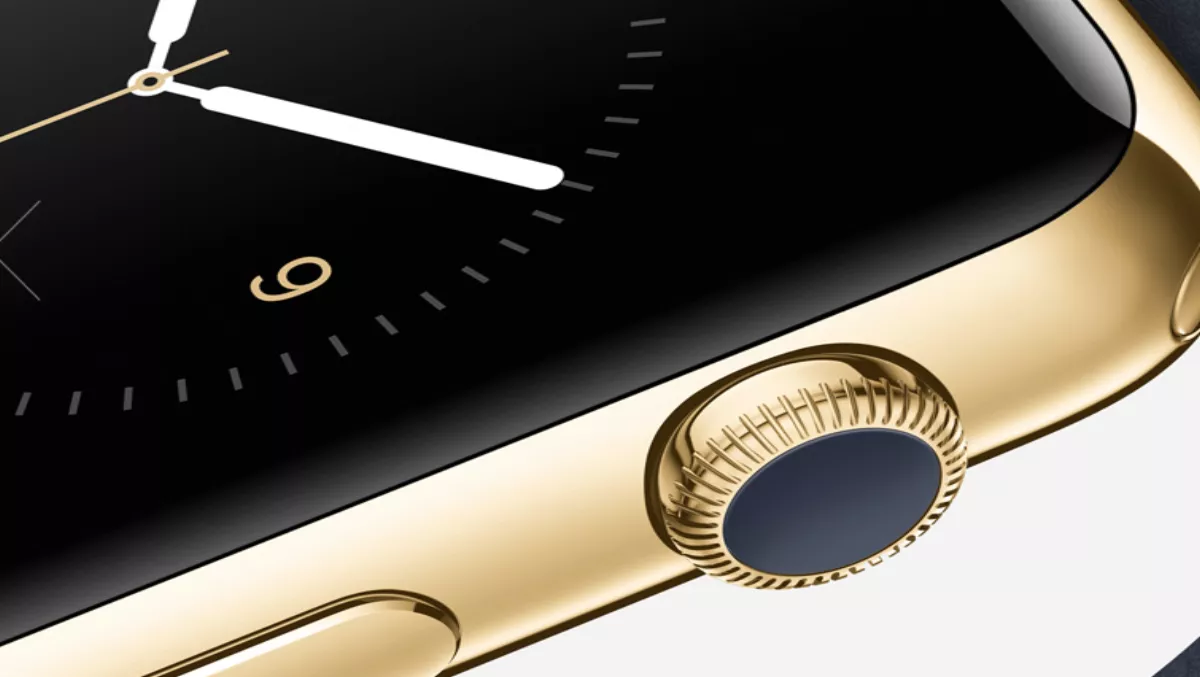
Expert analysis: Apple Watch set to drive wearable market
As part of Apple’s event, the tech giant introduced the Apple Pay mobile payments platform, and the Apple Watch smart watch.
Analysys Mason anticipates that smartwatches will become the dominant wearable smart device by sales in early 2017.
In its forecast, Smart wearables: worldwide market trends, forecasts and strategies 2014 - 2020, the analyst forecasts that sales for smartwatches will outpace smart bands, worldwide, in 2017.
“By 2020 we anticipate the smartwatch market to be worth USD12.9 billion, annually for developed markets, with an installed base of 92.6 million devices,” says Martin Scott, Practice Head, Consumer Services Research.
“Smart watch take-up is still limited by total consumer interest. The total addressable market for smartwatches is limited by, for Apple at least, the iPhone base, but more significantly by consumer interest.”
Analysys Mason’s Connected Consumer survey indicates that 30% of US consumers would be interested in buying a smartwatch, compared to 27% in the UK and 28% in Spain.
“Apple will drive this market,” Scott adds. “Other manufacturers will benefit from a ‘halo’ of increased interest and awareness in smartwatches as a credible device type, but we do not anticipate any vendor from matching Apple in the short or medium term.
“The restriction of the Apple Watch to iPhone customers, and future cross-working with HomeKit and HealthKit strongly reinforce Apple’s device and lifestyle ecosystem.”
Enrique Velasco-Castillo, Digital Economy Analyst at Analysys Mason, believes the Apple Watch will at first have a chilling effect on competitors, followed by a spike in sales upon launch.
“Apple’s new wearable will significantly slow down sales of competing devices in the final quarter of 2014 as consumers wait for the Apple Watch to reach stores in Q1 2015,” he adds.
“Analysys Mason expects just under 1 million smartwatches to have sold by the end of 2014; this will leap to 13.6 million sales in 2015 following the Apple Watch launch.
“It will become the centre (time)piece of interaction with other Apple devices: Siri voice recognition, along with HomeKit (smart home control) and third-party apps will enable new use cases for health and fitness (through HealthKit), shopping (thanks to Apple Pay), and communication.”
Apple Pay…
Velasco-Castillo also believes Apple has an advantage in the race for mobile commerce and payments dominance thanks to a combination of security features in the iPhone 6 and the Apple Watch, detailed customer data, key partnerships with card networks and merchants, and sheer good timing.
“Convenient for users, secure for merchants: security features on the iPhone (Touch ID, Secure Enclave, tokenisation and encryption between the handset and the payments terminal) mean convenience for users, and lower fraud rates for merchants,” he adds.
So much so that Velasco-Castillo thinks the time is right. “US banks and merchants will be required to switch from magnetic stripe cards to the chip-and-PIN standard (EMV) in use worldwide,” he adds.
“This switch will require an overhaul of payment terminals in stores, which will likely support contactless payments.
“Recent security breaches at large retailers in the US have served to accelerate this transition.”
Velasco-Castillo says there will be over one billion iTunes accounts by Q4 2015 and that Apple also holds detailed customer data through its more than 800 million iTunes accounts-of which the majority have credit cards associated to them.
As a result, Analysys Mason expects Apple to have over 1 billion iTunes accounts by Q4 2015-just in time for the switch to chip-and-PIN in the US.
Attractive for merchants? “Apple may have been able to negotiate lower transaction fees with its card network partners, and will likely pass on the savings to merchants in the form of lower transaction fees,” Velasco-Castillo adds.
“This will help persuade them to accept Apple Pay at their stores.
“In addition, Apple’s iBeacon technology will allow merchants to personalise in-store experiences and prevent fraud by using their customers’ location.”
John Abraham, lead analyst for Analysys Mason’s Revenue Management research programme, thinks Apple's approach is to improve the stickiness of its platform by creating a seamless payment experience with robust security linked to biometrics through its iPhone TouchID.
“This runs against the tide of other payment initiatives by several CSPs and some others, that was primarily aimed at becoming a new revenue stream.” Abraham adds.
“Apple Pay will not have any direct impact on CSP revenue at present. The greater impact will be the loss of potential customer relationship opportunities by letting Apple become the gatekeeper for all mobile commerce transactions.
“This will be limited at first as Apple Pay is limited to new iPhones, but the impact will expand in scope and coverage over the next few years.”

